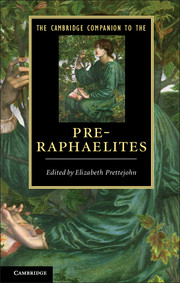2 - Artistic inspirations
from PART ONE - PRE-RAPHAELITISM
Published online by Cambridge University Press: 28 September 2012
Summary
When Burne-Jones died in 1898, his obituarist in The Times lamented that an age of legend, magic and mystery had died with him. ‘The tide is running away from Botticelli and Van Eyck, towards Velasquez’, explained the newspaper, drawing a neat but predictable line between two epochs of taste: the revivalism of the nineteenth century on the one hand and the incipient modernism of the fin de siècle on the other. Then, as now, the Pre-Raphaelites were chiefly associated with the art of the fifteenth century, art before Raphael, which became fashionable with the Victorians. By the time of Burne-Jones's death, another revival was under way, as the fin de siècle embraced Velázquez, the old master whose broad, painterly realism had inspired Manet, Whistler and other modern painters. But while Pre-Raphaelitism has rightly retained its place in the cultural imagination as a project inspired by the fifteenth century, its sphere of interest regarding the art of the past was actually broader, its intersection with past and present canons more complex. Indeed, Pre-Raphaelitism was itself a product of the growth of art history in the nineteenth century, the movement's shifting reference points closely allied to developments in the new field. Not only that, but the Pre-Raphaelites influenced that discourse, as crucial a cog in the canon-making machine during the nineteenth century as the museums and old masters that inspired them. Far from dying with Burne-Jones as The Times predicted, for example, the interest in Botticelli that he and Rossetti, in particular, had helped to kindle became a serious art-historical effort among scholars between 1900 and 1920, when more books were published on the Italian quattrocentist than on any other old master.
- Type
- Chapter
- Information
- The Cambridge Companion to the Pre-Raphaelites , pp. 32 - 46Publisher: Cambridge University PressPrint publication year: 2012
- 1
- Cited by



